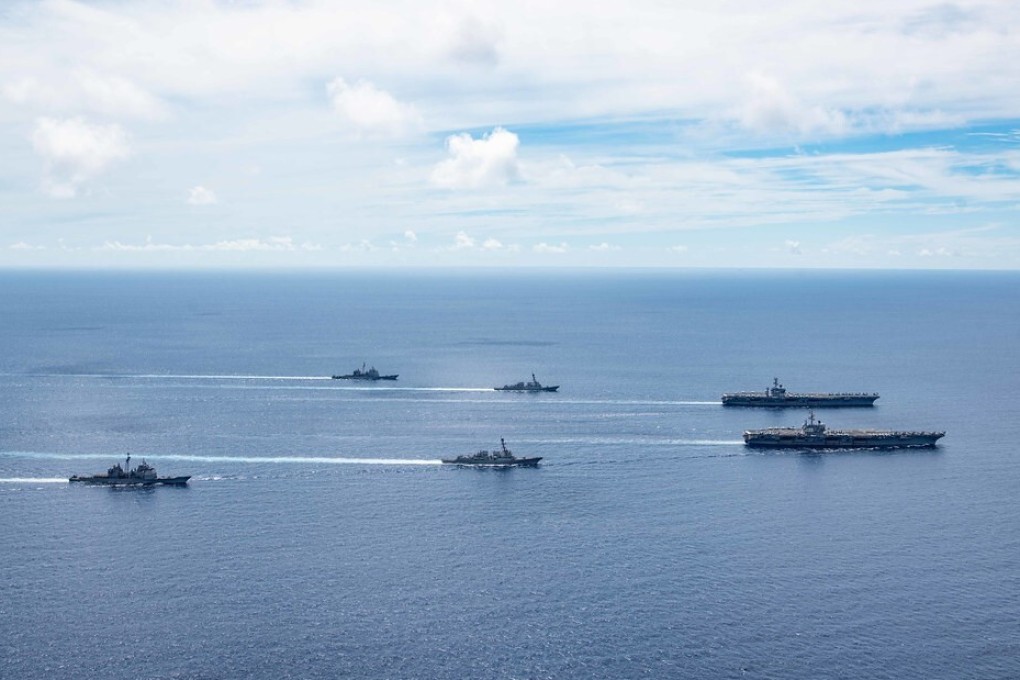US Air Force surveillance plane spotted off south coast of China, think tank says
- E-8C aircraft seen reconnoitring near Guangdong province for third time this week, South China Sea Strategic Situation Probing Initiative says
- US Navy says two aircraft carrier strike groups led by USS Nimitz and USS Ronald Reagan carried out tactical air defence exercises in region to maintain combat readiness

The US Air Force E-8C aircraft, which is fitted with specialist radar, communications, operations and control systems, was seen reconnoitring as close to 72 nautical miles off the coast of Guangdong province, according to the South China Sea Strategic Situation Probing Initiative, a think tank based at Peking University.
The sighting was the third this week, it said. Analysts said the plane was probably monitoring Chinese troop deployments and movement along the coast.
The think tank said also that a US Air Force E-3 Sentry early warning and control aircraft, which provides all-weather surveillance, command, control and communications, was spotted over the South China Sea.
Also on Friday, the US Navy said two of its aircraft carrier strike groups had conducted dual exercises in the South China Sea to boost their combat readiness.